Senate Infrastructure Bill Seeks to Make Breathalyzers, Interior Cameras Mandatory

The U.S. Senate is currently considering a $1 trillion bipartisan infrastructure bill that’s primarily targeting the ailing highway system, with tens of billions left over to spend on advancing the nation’s EV charging infrastructure and incorporating more eco-friendly modes of public transportation. But there’s also some really kooky shit that you need to be made aware of before this passes into law.
Along with new regulations that would mandate the inclusion of collision detection systems and automatic emergency braking, where the car calls your bluff and applies the wheel-stoppers independently of your actions, provisions have been made that would also require some kind of in-car breathalyzer. The stated aim is to reduce incidents of drunk driving. However, the proposed system may also include driver-monitoring cameras, totally undermining any nobility the cause might otherwise have had.
Complaining about regulatory overreach is kind of my beat and the last few years have kept me truly busy. But this is on a whole other level as the nanny state runs amok — and we’re just getting started.
Section 13002 of the bill includes a “per-mile user fee pilot” designed to help offset the highway infrastructure money lost via fuel taxes as vehicles become more efficient and/or electrified. Unfortunately the program aims to use connected OBD-II devices, OEM-collected telematic data, smartphone app, and information from insurance companies to effectively allow the government to track your whereabouts 24/7 and set up a payment plan using information you didn’t necessarily give up willingly. Some of those systems could also be leveraged to assist in some of the other proposals that have been tucked away in the bill, including the aforementioned inebriation issue.
While incidents of drunk driving have come down over the decades, it remains a legitimate problem. We also saw 2020 deliver some of the worst crash rates in U.S. history despite people undoubtedly driving less and the previous downward trends. Sadly, the government solution seem to be based around inconveniencing regular people while simultaneously violating their right to privacy.
The 2,700-page document suggests installing automated traffic enforcement hubs, networked with speed and stoplight cameras (similar to what currently exists in China) and requiring automakers to install breathalyzers (or their equivalent) inside of vehicles that must be used before an automobile can even be started. This is a popular tactic among the court system as a way to ensure DUI recipients aren’t setting off three sheets to the wind. But one of the criticisms was that drivers could simply have someone else blow into the device. Well, the interested parties have accounted for that by requiring some kind of in-car monitoring system that not only makes sure you’re the one blowing but also has the ability to track face and eye movements in case you’re planning to get drunk while driving.
Considering automakers are already installing driver-facing cameras as part of their “advanced driving suites” or “driver assistance packages,” it’s not much of a stretch to see that hardware readapted for government use. The industry has even begun signaling that it’s happy to comply.
Carla Bailo, CEO of the Center for Automotive Research, recently told NBC News that the real issue won’t even be developing the hardware to do this. It already exists. The hard part will be making it cheap enough so that automakers can make sure all of it can go into literally every car produced.
“I don’t think that will be as easy as people might think,” Bailo said.
From NBC:
Nissan, for one, is working on a system that would use several different methods to see if an impaired driver is behind the wheel. Multiple sensors detect alcohol in cabin air. A camera atop the instrument cluster looks for facial cues signaling the driver is inebriated, and the vehicle itself looks for driving patterns suggesting an impaired driver.
But one concern is that the system could be triggered by drunk passengers, even with a sober, designated driver.
The federal government is funding research through the Driver Alcohol Detection System for Safety program. Several possible solutions are being studied, including one similar to a Breathalyzer. It would measure alcohol in the air around the driver, however, rather than requiring a motorist to blow into a tube every time they want start their vehicle. Like Nissan’s system, the challenge is to avoid false positives from an inebriated passenger.
A second system measures blood alcohol content in the body’s capillaries by shining a light on a driver’s finger. It could be built into a vehicle’s start button or steering wheel.
It’s all very futuristic until you remember that self-driving cars were supposed to have arrived a couple of years ago and the industry’s solution was to release a bunch of half-baked assistance features that mandate constant surveillance so the automaker can avoid any liabilities. That technology is now becoming the keystone for the proposed safety legislation that’s lurking in the Senate infrastructure bill.
Those in need of further proof that this is all sketchy as hell need look no further than its endorsement by the world’s largest automotive lobby. The Alliance for Automotive Innovation (AAI) has already expressed support for driver-monitoring cameras, which are completely in line with what the bill’s proposing.
“The auto industry has long been committed to supporting public and private efforts to address this tragic threat to road safety,” John Bozzella, CEO of the Alliance for Automotive Innovation, stated. “This legislation furthers the possibility for advanced technologies to help address the risk of impaired driving.”
Additional requirements from the bill include automakers to include some sort of rear-seat monitoring that would alert operators when they’ve left a child in the rear seat (something many vehicles already have) and collision detection systems (ditto). The only real change is that they would be required hardware for all vehicles, rather than something that could be added as an option. Of course, the industry doesn’t care because their inclusion can now just be baked into the final asking price, rather than something you’ll have to be sold into at the dealership.
If you have a free weekend, I strongly urge you to read the bill. It’s not just the automotive content that veers into the weeds. The entire thing is loaded with those weird inclusions that have nothing to do with infrastructure but had no other way of being snuck into law. Though it could be too late by then because a vote on the bill is expected to take place at any moment.
[Image: Architect of the Capitol]

A staunch consumer advocate tracking industry trends and regulation. Before joining TTAC, Matt spent a decade working for marketing and research firms based in NYC. Clients included several of the world’s largest automakers, global tire brands, and aftermarket part suppliers. Dissatisfied with the corporate world and resentful of having to wear suits everyday, he pivoted to writing about cars. Since then, that man has become an ardent supporter of the right-to-repair movement, been interviewed on the auto industry by national radio broadcasts, driven more rental cars than anyone ever should, participated in amateur rallying events, and received the requisite minimum training as sanctioned by the SCCA. Handy with a wrench, Matt grew up surrounded by Detroit auto workers and managed to get a pizza delivery job before he was legally eligible. He later found himself driving box trucks through Manhattan, guaranteeing future sympathy for actual truckers. He continues to conduct research pertaining to the automotive sector as an independent contractor and has since moved back to his native Michigan, closer to where the cars are born. A contrarian, Matt claims to prefer understeer — stating that front and all-wheel drive vehicles cater best to his driving style.
More by Matt Posky
Latest Car Reviews
Read moreLatest Product Reviews
Read moreRecent Comments
- Lorenzo This car would have sold better if there was a kit to put fiberglass toast slices on the roof.
- Lorenzo The Malibu is close to what the 1955 Bel Air was, but 6 inches shorter in height, and 3 inches shorter in wheelbase, the former making it much more difficult to get into or out of. Grandma has to sit in front (groan) and she'll still have trouble getting in and out.The '55s had long options lists, but didn't include a 91 cubic inch four with a turbo, or a continuously variable transmission. Metal and decent fabric were replaced by cheap plastic too. The 1955 price was $1765 base, or $20,600 adjusted for inflation, but could be optioned up to $3,000 +/-, or $36,000, so in the same ballpark.The fuel economy, handling, and reliability are improved, but that's about it. Other than the fact that it means one fewer sedan available, there's no reason to be sorry it's being discontinued. Put the 1955 body on it and it'll sell like hotcakes, though.
- Calrson Fan We are already seeing multiple manufacturers steering away from EVs to Hybrids & PHEVs. Suspect the market will follow. Battery tech isn't anywhere close to where it needs to be for EV's to replace ICE's. Neither is the electrical grid or charging infrastructure. PHEV's still have the drawback that if you can't charge at home your not a potential customer. I've heard stories of people with Volts that never charge them but that's a unique kind of stupidity. If you can't or don't want to charge your PHEV then just get a hybrid.
- AZFelix The last time I missed the Malibu was when one swerved into my lane and I had to brake hard to avoid a collision. 1 out of 5⭐️. Do not recommend.
- 2ACL I won't miss it; it was decent at launch, but in addition to the bad packaging, GM did little to keep it relevant in the segment. I'd prefer that another domestic automaker doesn't just give up on the mainstream sedan, but unlike some of Ford's swan songs, the Malibu made an indifferent case for why they should live.



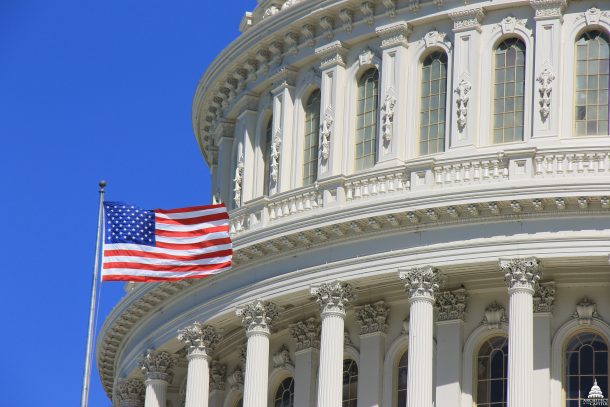












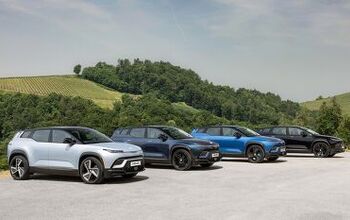


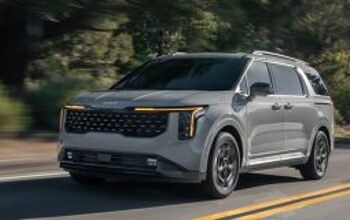



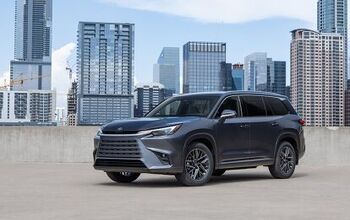
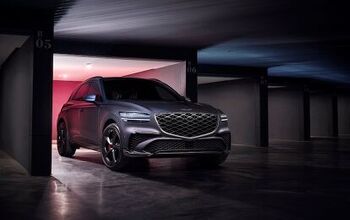
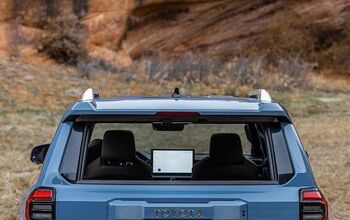








Comments
Join the conversation
Also if Toyota has perfected solid state batteries then why are they trying to slow EVs down. https://www.wired.com/story/toyota-whiffed-on-electric-vehicles-now-trying-slow-their-rise/
The unfortunate downside is that as people are protected from doing dumb stuff that would result in their personal injury, they have no incentive not to do dumb stuff anymore. People become dumber. They don't know WHY they should not do dumb stuff. People become more and more separated from natural law, they no longer know natural law. Only problem is, natural law still exists despite their ignorance of it and their next encounter with it will be very painful indeed.